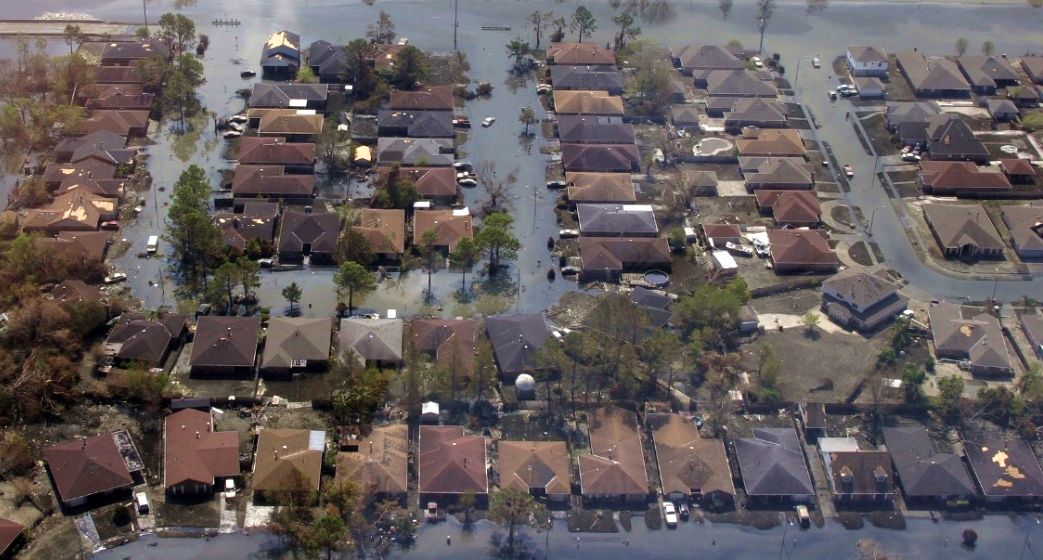Preparedness Starts at Home | Building a Resilient Community

This National Preparedness Month, we encourage everyone to help build a stronger, more resilient nation by taking steps to prepare their loved ones and protect their home and communities before a disaster strikes.
Climate disasters are becoming more frequent and severe over time. According to the National Oceanic and Atmospheric Administration (NOAA), the United States experienced 20 separate billion-dollar disasters last year alone, including wildfires, floods, tropical cyclones, and other severe weather events. The nation is on track for another busy year in 2022, with 9 billion-dollar disasters already occurring as of early July.
Preparedness is key to mitigating future damage.
Never let your guard down. While the 2022 hurricane season has been relatively calm to date, we are quickly approaching the season’s peak (mid-September) and still have two months remaining. It is also important to note that our country is prone to several other hazards during this same time. There is a high probability for flooding, drought, heat waves, and wildfires in various parts of the United States.
Every threat is different. While we cannot predict how a disaster will affect our community, we should always prepare for the worst. Everyone is encouraged to make a family emergency plan, build a disaster supply kit, know the risks where you live and work, and most importantly, remain informed and monitor potential threats to your area.
Be prepared, always. Individuals and families without a plan are often more susceptible to damage leading to expensive repair expenses and a longer recovery. Do not wait until the last minute – start now. Make time to begin this conversation at home and determine what next steps to take if a disaster were to strike.
How will you prepare? Let team IEM help you get started:

Step 1: Know Your Risk
It’s important to know what types of hazards may affect your area. Every hazard could impact us differently, so there is not a one-size-fits-all approach to disaster preparedness. Make a plan that is specific to your community and the risks you may experience.
Did You Know: In the United States, the most common disaster is flooding.
Step 2: Make a Plan
Ready to start developing your family plan? Here are some factors to consider:
- Where is the safest location to shelter in place at home?
- What route should you take if you need to evacuate and get to safer or higher ground?
- How will you communicate with your family if you are separated or not in the same place when disaster strikes?
- What supplies and how much of each item will you need in your disaster supply kit (e.g., medicine, pet food)?

You may need different plans based on varying hazards that could impact your home and family. It is imperative that everyone in your household is familiar with the plan in place. Involve family members in the planning process to ensure their needs are taken into consideration. Review your family emergency plan regularly and practice it, where applicable.
Download a free family emergency communication plan template from Ready for a simple step-by-step checklist to facilitate your family planning as well as helpful contact sheets for you to fill out and share with each family member. For additional resources and information, visit Ready.gov.

Step 3: Build a Disaster Supply Kit
If you wait until a disaster is imminent to build a disaster supply kit, it may be too late. At that point, supplies could be scarce and store shelves tend to run low or lack essential products.
To avoid the last-minute rush, build your kit ahead of time and maintain it by regularly checking for expired items. Creating a disaster supply kit can be expensive if done all at once. By planning ahead, you can buy an item or two on separate grocery store trips and slowly build up your kit over time.
The financial impact of preparedness can seem overwhelming – spreading out the cost over a longer period of time may make it more manageable.
Generally, it is recommended to have enough supplies for a minimum of three days per person. Preferably, you should stock up enough supplies for ten days up to three weeks knowing it may be a while until services are fully restored.
When figuring out what to include in your disaster supply kit, there are several factors to consider, including household makeup (e.g., number of people, ages), pets, and specific needs for everyone in the house (e.g., medical needs, dietary restrictions, limited mobility).
Here are some of the basic items to include: water, non-perishable food, pet food, medicines, a hand crank radio, flashlights, and batteries.
Need more ideas? Check out this basic disaster supplies kit list from Ready.
Step 4: Keep Your Plan Up to Date
Your disaster preparedness needs can change over time. Keep your family emergency plan current with the latest evacuation routes, communications plan, and household needs.
- Has your household makeup and/or needs changed?
- Have you moved to a new location?
Prepare today, for a more resilient tomorrow.


Step 5: Stay Informed
Keep track of local weather reports to make sure you are immediately notified of potential storms or other disasters in your area. If available, sign up for local emergency weather alerts/notifications.
While not all disasters offer sufficient notice, weather events are generally a little more predictable. If a storm begins to form, watch for any updates regarding its path and intensification. If you know impact is imminent, heed guidance from local officials and be prepared to follow your family emergency plan.
Make all necessary preparations to keep your family and home safe.
By following these five steps, you are closer to building a culture of readiness within your family and in your community. Encourage family, friends, and neighbors to join you to create a more resilient nation today.




